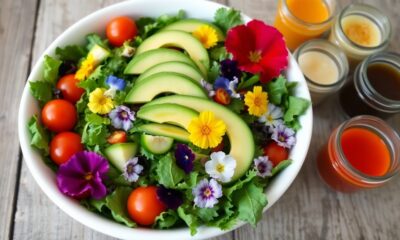Lebanese Cuisine
Kibbeh
Savor the captivating essence of Kibbeh, a Middle Eastern delicacy that masterfully blends bulgur, meat, and spices, inviting you to uncover its remarkable…[INSTRUCTIONS
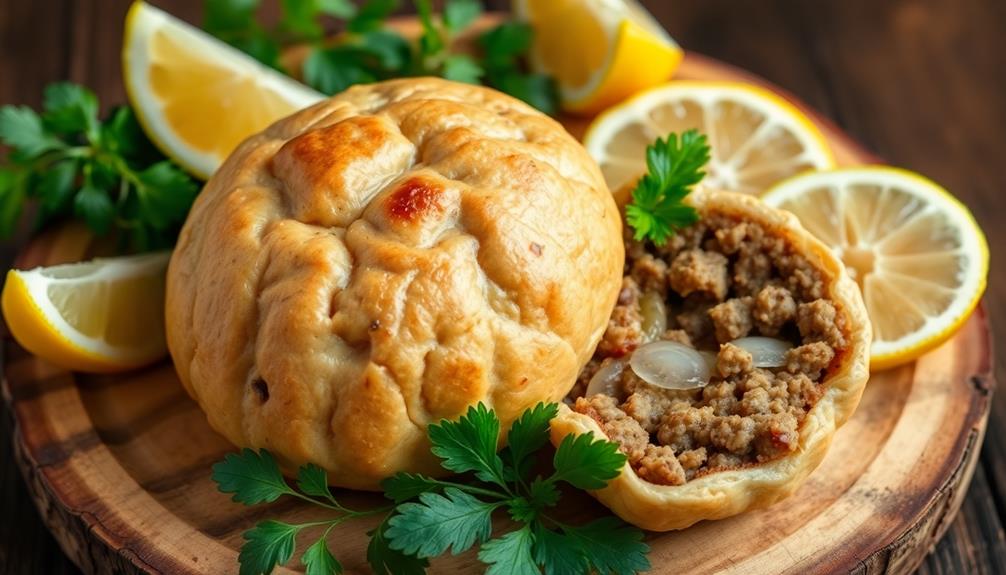
Kibbeh, a delightful Middle Eastern delight, traces its roots to the Levant region. This savory treat, crafted from bulgur wheat, minced onions, and seasoned ground meat, has captivated taste buds worldwide. Dive into the process – first, grind the meat and bulgur into a cohesive paste, then shape the mixture into oval forms. Next, you can fry the kibbeh to a golden crisp or bake them to a delectable perfection. Serve the hot kibbeh with a cool, creamy yogurt sauce for a harmonious contrast. Discover the rich culinary heritage and enjoy the tantalizing flavors that make kibbeh a true sensation. But the story doesn't end here…
Key Takeaways
- Kibbeh is a traditional Middle Eastern dish, primarily originating from the Levant region, consisting of bulgur wheat, minced onions, and seasoned ground meat.
- Diverse variations of kibbeh have emerged due to cultural influences and regional adaptations, showcasing the dish's versatility and culinary heritage.
- The cooking process involves grinding the ingredients together, shaping the mixture into oval forms, and then frying or baking the kibbeh.
- Serving hot kibbeh with a cool, creamy yogurt sauce provides a delightful flavor contrast and enhances the overall tasting experience.
- Mastering the shaping technique is crucial for achieving the classic kibbeh form and creating a cohesive, paste-like consistency of the mixture.
History
Kibbeh's history traces back thousands of years, originating in the Levant region of the Middle East. This beloved Middle Eastern dish has been a staple in the lives of people from countries like Syria, Lebanon, and Iraq for generations.
Over time, different cultures have put their own unique spin on the recipe, resulting in a wide variety of delicious kibbeh variations.
The word "kibbeh" comes from the Arabic word "kubbah," meaning "ball" or "sphere." This refers to the iconic shape of this dish, which is typically formed into small oval or torpedo-shaped croquettes.
The main ingredients in traditional kibbeh are bulgur wheat, minced onions, and seasoned ground meat, usually lamb or beef. These simple yet flavorful components come together to create a dish that's both satisfying and comforting.
As kibbeh's popularity has spread around the world, creative chefs have experimented with new fillings and cooking methods, ensuring this ancient dish remains a beloved part of many cultures' culinary heritage.
Cooking Steps
To start the cooking process, first gather all the necessary ingredients and equipment.
You'll need things like bulgur wheat, onions, ground meat, and spices. Once you have everything ready, it's time to get mixing!
Begin by combining the bulgur wheat, onions, and ground meat in a large bowl.
Use your hands to really work the ingredients together until they're well incorporated. Don't be afraid to get a little messy – that's part of the fun!
Next, add in the spices.
Things like cinnamon, allspice, and black pepper will give your kibbeh that authentic flavor. Mix everything together thoroughly, then shape the mixture into small oval-shaped patties.
Now it's time to fry up your kibbeh.
Heat some oil in a pan over medium-high heat, then carefully add the patties. Fry them for a few minutes per side, or until they're golden brown and crispy.
Once they're cooked, you can serve your kibbeh hot, with a side of yogurt or tahini sauce for dipping.
Enjoy your delicious homemade kibbeh!
Step 1. Grind Meat and Bulgur Together
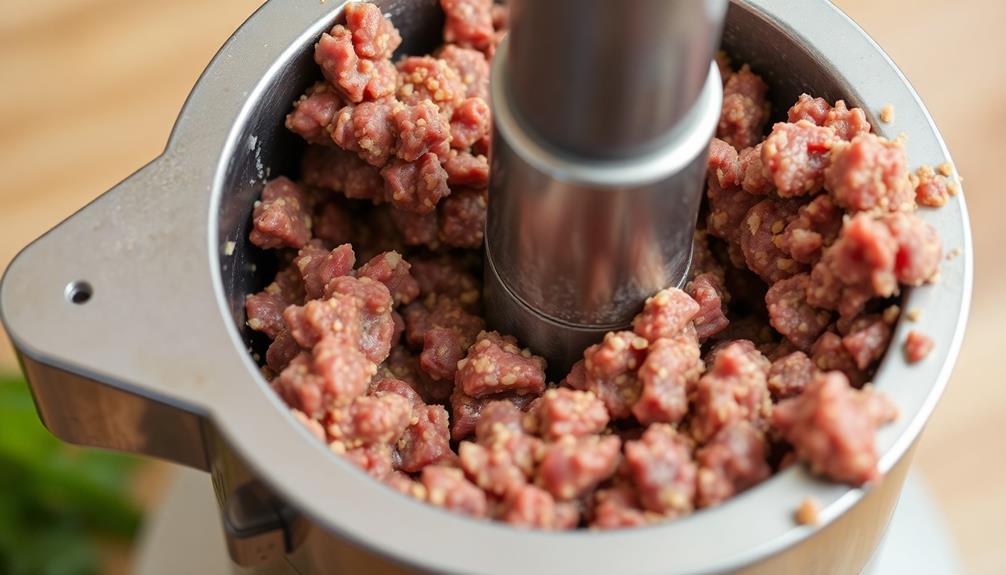
The food processor whirs to life, blending the tender beef and fragrant bulgur into a cohesive mixture. You'll want to use a high-powered blender or food processor to get the perfect texture – not too chunky, but not completely smooth either. Aim for a fine, almost paste-like consistency that holds together nicely.
As the machine does its work, the aromas of toasted spices and fresh herbs fill the air, making your mouth water in anticipation.
Once the meat and bulgur are well-combined, you can begin shaping the mixture into the classic kibbeh form. Pinch off a small amount and roll it between your palms to create an oval shape, tapering the ends to a point.
The key is to work the mixture gently, maintaining its cohesive texture without overworking it. With a little practice, you'll be rolling out perfect kibbeh balls in no time. Get ready to fry them up and enjoy the delicious results of your handiwork!
Step 2. Shape the Mixture
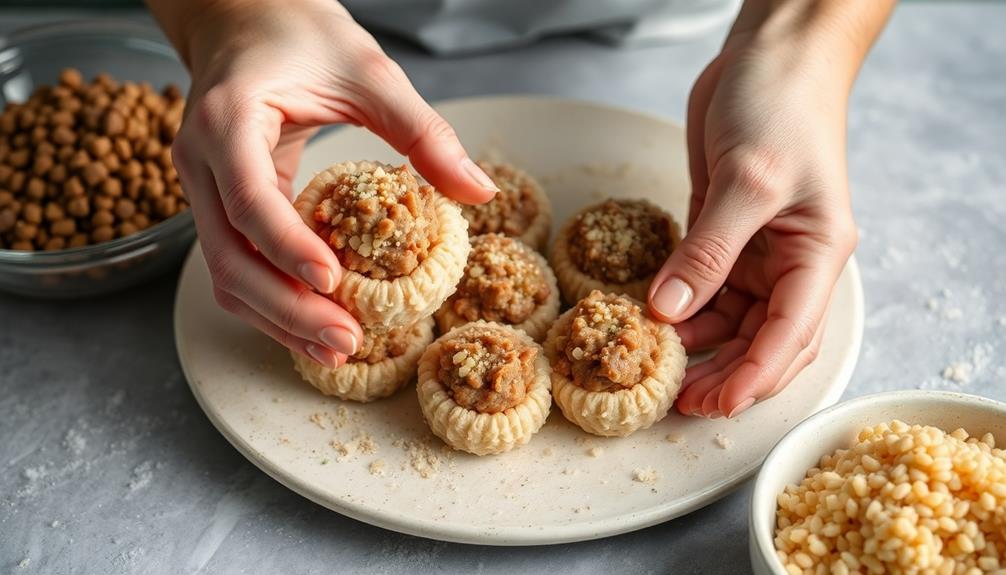
With the meat and bulgur now blended to the perfect consistency, you can start shaping the mixture into the iconic kibbeh form.
First, divide the dough into small, palm-sized portions. Gently roll each piece between your hands to create an oval shape. Be careful not to squeeze too hard, as you don't want to compact the mixture too much.
Next, use your thumb to make a hole in the center of the oval. Carefully pinch and shape the dough, creating a hollow shell. This is the signature kibbeh shape. If the hole starts to close, just gently reopen it with your thumb.
Keep practicing, and soon you'll be shaping these delightful dumplings like a pro.
Once you've mastered the basic shape, you can get creative. Try adding different fillings, like seasoned ground meat or a blend of sautéed onions and pine nuts.
The possibilities are endless, so have fun experimenting with your kibbeh creations.
Step 3. Fry the Shaped Kibbeh
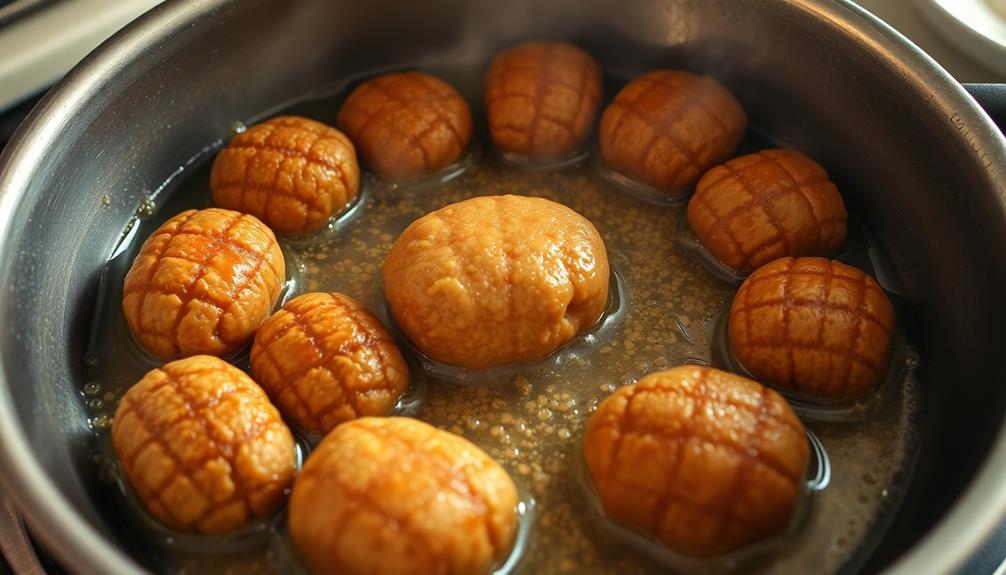
Once the kibbeh are shaped, you'll want to fry them to a golden brown.
Heat up some oil in a skillet over medium-high heat. Gently lower the shaped kibbeh into the hot oil, being careful not to overcrowd the pan. Fry for 2-3 minutes per side, turning occasionally, until they're crispy and cooked through.
Keep an eye on the kibbeh as they fry, adjusting the heat as needed to prevent burning. You'll know they're ready when they've turned a deep, rich brown color.
Use a slotted spoon to transfer the fried kibbeh to a paper towel-lined plate to drain off any excess oil.
Serve the piping hot kibbeh while they're fresh and crispy. They make a wonderful appetizer or side dish.
Enjoy the contrast of the crunchy exterior and the savory, aromatic interior. With a little practice, you'll be frying up perfectly golden kibbeh in no time!
Step 4. Bake the Kibbeh in Oven
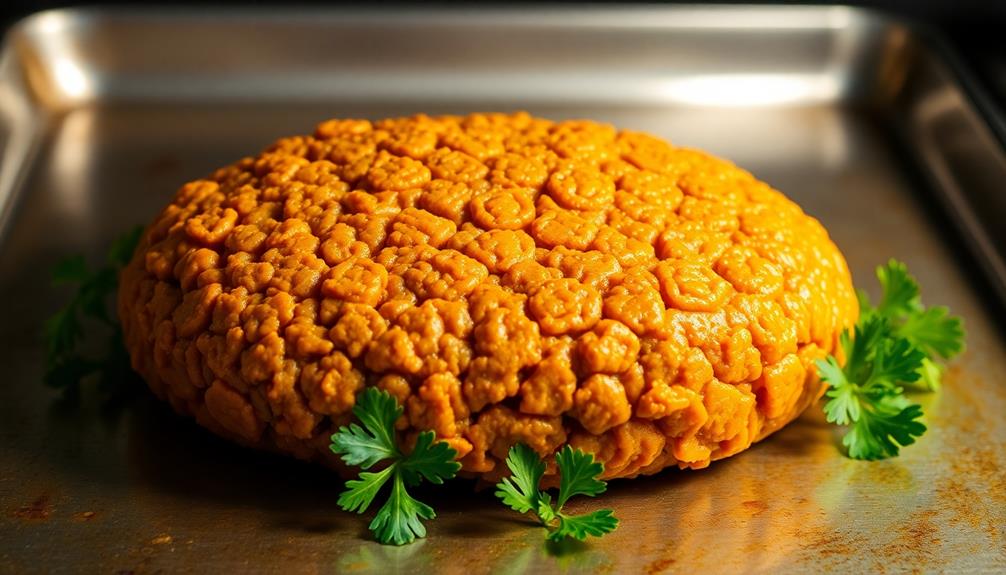
Alternatively, you can bake the shaped kibbeh in the oven for a healthier preparation.
Preheat your oven to 375°F (190°C). Lightly grease a baking dish or sheet with a bit of oil. Gently place the formed kibbeh into the prepared dish, being careful not to damage their shape.
Once the oven is hot, pop the kibbeh in and let them bake for about 30-35 minutes. Keep an eye on them, as you want the outer shell to turn a nice golden-brown color. The filling should be hot and cooked through.
When the time's up, carefully remove the baked kibbeh from the oven. Let them cool for a few minutes before serving.
Baking the kibbeh is a great way to enjoy this traditional dish with less oil. Serve the oven-baked kibbeh with a fresh salad or your favorite dipping sauces for a delicious and healthy meal. Enjoy!
Step 5. Serve Hot With Yogurt Sauce
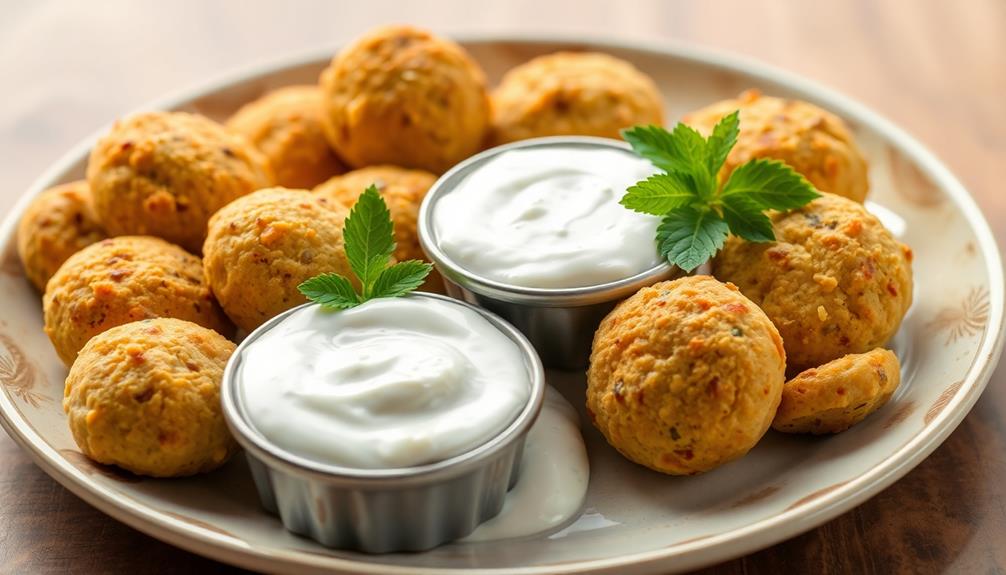
Serve the hot baked kibbeh alongside a cool and creamy yogurt sauce for a delightful contrast of flavors and textures. The yogurt sauce complements the savory kibbeh perfectly, providing a refreshing and tangy accompaniment.
To make the sauce, simply mix together plain Greek yogurt, a squeeze of fresh lemon juice, a pinch of salt, and a sprinkle of chopped fresh mint or parsley. Stir the ingredients until well combined.
When you're ready to serve, place the warm kibbeh on a platter and drizzle the yogurt sauce over the top or offer it on the side for dipping. The cool, creamy sauce will help balance the richness of the kibbeh.
Encourage your guests to scoop up bites of the kibbeh and dunk them into the flavorful sauce. The combination of the crispy outer shell, the tender interior, and the cool, tangy yogurt creates an incredible burst of flavors in every bite. Enjoy this delightful pairing!
Final Thoughts
Kibbeh, the beloved Middle Eastern staple, has intrigued and delighted culinary enthusiasts worldwide. As you've discovered, this versatile dish offers a symphony of flavors and textures that dance on the palate. For those looking to experience the authentic taste of Kibbeh, they need look no further than the traditional kebbe nayeh recipe. This classic dish, made with a perfect blend of bulgur, minced onions, and ground meat, has been passed down through generations, preserving its rich heritage and cultural significance. With a few simple ingredients and a touch of love, anyone can recreate this timeless delicacy in their own kitchen.
From the crisp, golden exterior to the savory, seasoned interior, each bite is a delightful experience.
Whether you prefer the classic fried version or the baked rendition, kibbeh is a true testament to the rich culinary heritage of the Middle East.
As you continue your kibbeh adventure, don't be afraid to experiment with different fillings and garnishes. The possibilities are endless, and each variation will tantalize your taste buds in unique ways.
Frequently Asked Questions
What Is the Main Ingredient in Kibbeh?
Alright, let's dive into this tasty question!
The main ingredient in kibbeh is ground meat, usually lamb or beef. This savory mixture is then combined with cracked wheat, onions, and a blend of spices to create a delicious and nutritious dish.
The ground meat provides the protein, while the cracked wheat adds a satisfying texture.
With its rich flavors and unique preparation, kibbeh is a truly delightful culinary experience!
Is Kibbeh a Healthy Food Option?
Kibbeh can be a healthy food option, but it depends on how it's made. The main ingredient is usually bulgur wheat, which is a whole grain that's high in fiber and nutrients.
When made with lean meats, vegetables, and baked instead of fried, kibbeh can be a nutritious choice. However, if it's deep-fried or has lots of fatty meats, it may not be as healthy.
The key is to look for a recipe that uses healthier ingredients and cooking methods.
Can Vegetarians Enjoy Kibbeh?
Can Vegetarians Enjoy Kibbeh?
Absolutely! Vegetarians can definitely enjoy kibbeh. While traditional kibbeh is made with meat, there are delicious vegetarian versions that use plant-based ingredients instead.
You can find kibbeh recipes that use lentils, bulgur wheat, or even chickpeas to create a tasty, meatless dish. The key is finding the right vegetarian substitutes that capture the unique flavors and textures of this Middle Eastern favorite.
With a little creativity, vegetarians can savor the delights of kibbeh too!
How Long Can Cooked Kibbeh Be Stored?
Cooked kibbeh can actually last quite a while in the fridge! When stored properly, it'll stay fresh and delicious for up to 5 days.
Just make sure to keep it in an airtight container and pop it in the fridge. That way, you can enjoy your tasty kibbeh for days to come. Yum!
Though, if you're not sure, it's always best to give it a sniff before digging in. Safety first, right?
Is Kibbeh Gluten-Free?
Yes, kibbeh can definitely be gluten-free! If you're following a gluten-free diet, you're in luck.
Kibbeh is made with bulgur wheat, but you can easily substitute that with gluten-free ingredients like rice flour or ground nuts. The key is to make sure all the other ingredients, like spices and herbs, are also gluten-free.
With a few simple swaps, you can enjoy this tasty Middle Eastern dish without worrying about gluten. Isn't that great news?
Nadia brings the warmth and depth of Lebanese cuisine to Cook if Ya. From classic mezze spreads like hummus and tabbouleh to rich, flavorful mains like shawarma and kibbeh, her recipes offer a delicious journey through the flavors of Lebanon, emphasizing fresh herbs, spices, and aromatic ingredients.
Lebanese Cuisine
Bazella W Riz (Peas and Rice)
Latent with history and flavor, Bazella W Riz is a comforting peas and rice dish that transcends cultures and leaves you craving more.
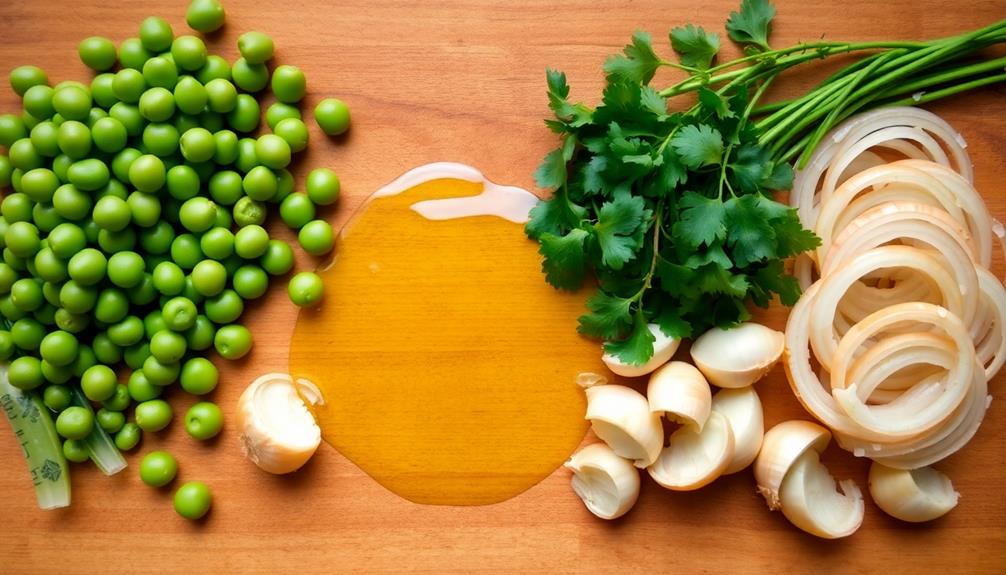
Bazella W Riz, an age-old blend of peas and rice, is a beloved comfort food that's cherished across many cultures. This hearty dish has a rich history, emerging as a way to stretch limited resources into tasty, nutritious meals. To make it, you'll first soak the peas overnight to soften them up. Then, you'll sauté onions and garlic, add tomatoes, peas, rice, broth, and spices, and let it all simmer until the rice is tender. The result is a fragrant, creamy dish that's sure to warm your soul. And if you keep reading, you'll discover even more about this delightful culinary tradition.
Key Takeaways
- Bazella W Riz is a traditional dish with a distinct culinary tradition that combines the staple ingredients of peas and rice.
- The dish emerged as a way to stretch limited resources into nutritious meals, with regional variations in spices, techniques, and serving styles.
- Proper preparation techniques, such as soaking peas overnight and adding spices, contribute to the dish's creamy texture and enhanced flavor.
- Simmering the rice and peas in broth allows the flavors to meld together, resulting in a tender and fragrant final dish.
- Bazella W Riz is cherished as a comfort food and cultural touchstone in many communities, reflecting a unique cultural experience and rich blend of flavors.
History
Although the origins of Bazella W Riz can be traced back centuries, its history as a distinct culinary tradition is relatively recent. The dish's core ingredients – peas and rice – have been staple foods in many cultures for millennia.
However, the specific combination and preparation method that defines Bazella W Riz emerged more recently, likely within the last few centuries. Historians believe the dish developed as a way to stretch limited resources and create a satisfying, nutritious meal.
By pairing the protein-rich peas with the starchy rice, cooks could feed more people with fewer ingredients. Over time, regional variations arose, with different spices, cooking techniques, and serving styles.
Today, Bazella W Riz is cherished as a beloved comfort food and cultural touchstone in many communities. Its enduring popularity speaks to the timeless appeal of simple, wholesome ingredients expertly combined to create a truly delectable dish.
Cooking Steps
To begin the cooking process, gather the necessary ingredients and equipment.
You'll need a large pot, a wooden spoon, and a cutting board. Start by chopping the onions, garlic, and tomatoes into small pieces.
In the pot, sauté the onions and garlic in some olive oil until they're fragrant and tender.
Next, add the tomatoes, peas, and rice to the pot. Pour in the broth and season with salt, pepper, and your favorite herbs.
Bring the mixture to a boil, then reduce the heat and let it simmer for about 20 minutes, or until the rice is cooked through and the peas are tender.
Stir the pot occasionally to prevent sticking.
Once it's done, remove the pot from the heat and let it sit for a few minutes. Fluff the rice with a fork and serve hot, garnished with fresh parsley or green onions if desired.
Enjoy your delicious Bazella w Riz!
Step 1. Soak Peas Overnight Before Cooking

Soaking the peas overnight before cooking is a simple yet essential step that can greatly improve their texture and flavor. When you soak the peas, you're allowing them to absorb water, which softens their tough outer shell and makes them easier to cook through.
This extra time also helps break down the complex starches and sugars within the peas, resulting in a creamier, more tender final dish.
Don't worry, the soaking process is easy! Just place the peas in a large bowl, cover them with water, and let them sit at room temperature overnight.
In the morning, you'll see the peas have plumped up and are ready to be drained and added to your recipe. This simple step ensures your peas will cook evenly and develop a delightful, creamy consistency.
Trust us, the extra time is well worth it for the delicious results!
Step 2. Drain and Rinse Soaked Peas
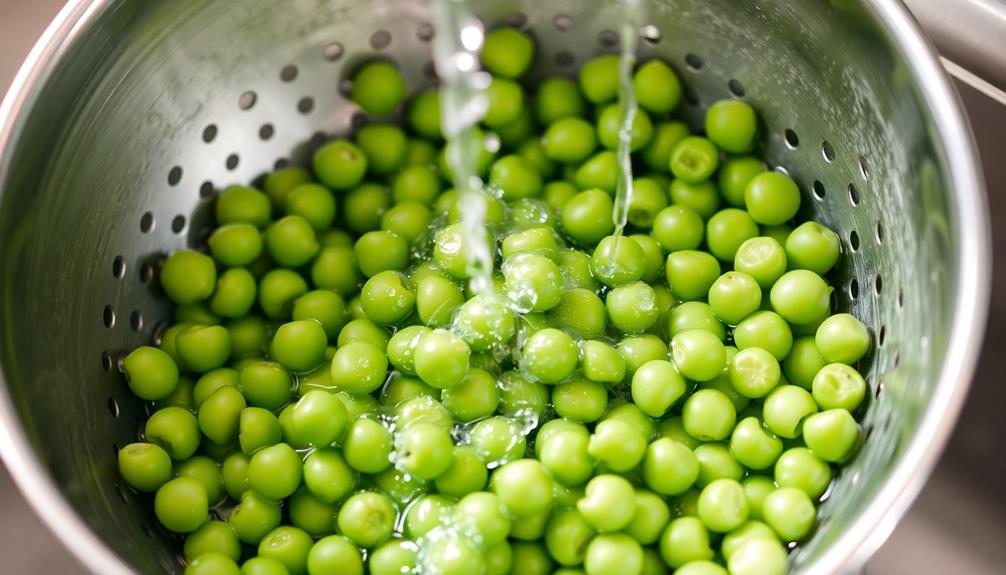
After letting the peas soak overnight, you'll want to drain and rinse them before cooking. This step is crucial to remove any excess starch and impurities that may have accumulated during the soaking process.
Simply place a colander in your sink and pour the soaked peas into it. Give them a good rinse under cool, running water, gently stirring the peas with your hand to ensure they're all getting a thorough cleaning.
Once they're nice and clean, you can shake the colander to help remove any excess water. This extra step may seem small, but it can make a big difference in the overall texture and flavor of your Bazella w Riz dish.
With the peas prepped and ready to go, you can now move on to the next stage of the recipe – cooking the rice and combining it with the drained and rinsed peas.
Get excited, because you're one step closer to enjoying a delicious, homemade Bazella w Riz!
Step 3. Add Spices to Peas
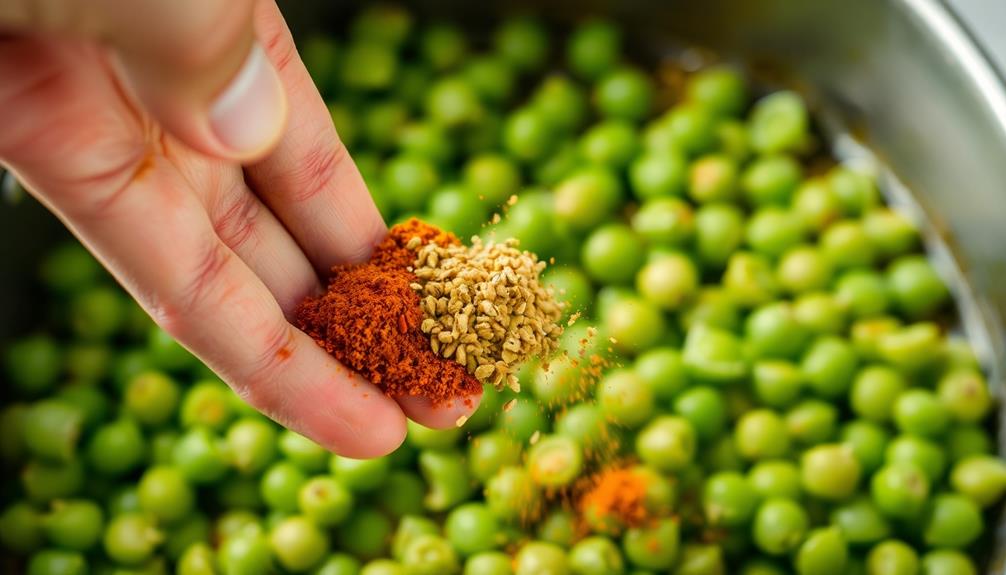
With the peas drained and rinsed, you're ready to start adding some flavor. First, gather your spices – you'll need cumin, coriander, and a pinch of cayenne pepper. Measure out a teaspoon of each spice and add them to the peas.
Consider enhancing the flavor profile with a touch of essential oils for respiratory health, which can also support your overall well-being while cooking. Give everything a good stir to coat the peas evenly.
The cumin will bring an earthy, warm aroma, while the coriander adds a bright, citrusy note. The cayenne pepper will give the dish a subtle kick of heat. Go easy on the cayenne at first – you can always add more later if you want a spicier flavor.
As you stir the spices into the peas, take a moment to inhale the tantalizing scent. The aroma of the spices will start to fill your kitchen, getting your taste buds excited for the delicious meal to come.
With the spices added, your peas are now ready for the next step – cooking them up with the rice.
Step 4. Add Rice and Peas

Grabbing the rinsed rice, combine it with the spice-coated peas in a large saucepan. Turn the heat to medium and let the flavors mingle. Stir occasionally as the rice starts to soak up the aromatic spices. Before long, the fragrance will fill the kitchen, making your mouth water.
Now, pour in the broth and bring the mixture to a gentle simmer. Cover the pan and let the rice cook, about 15-20 minutes, until it's tender and the liquid is absorbed. Remember to check it periodically, giving it a stir to prevent sticking.
Once the rice is cooked through, remove the pan from the heat. Fluff the rice and peas with a fork, then season with a pinch of salt and pepper to taste.
This simple, one-pot dish is bursting with delicious Middle Eastern flavors that are sure to satisfy. Serve it warm, and enjoy!
Step 5. Simmer Until Rice Is Tender
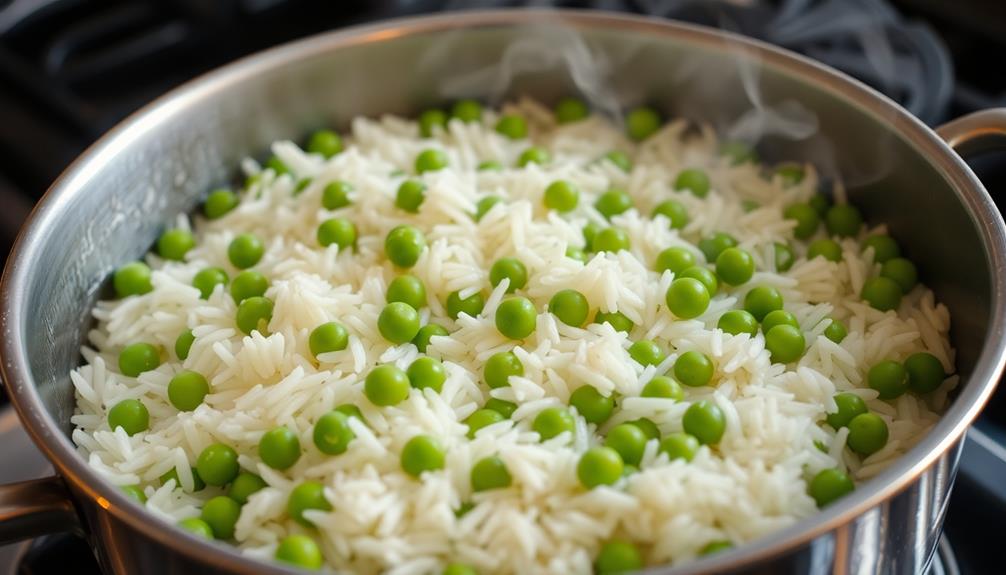
Next, gently pour in the broth and bring the mixture to a gentle simmer. You'll want to let it simmer for about 20-25 minutes, or until the rice is nice and tender. Be sure to stir it occasionally to prevent any sticking or burning. The rice should soak up all that delicious broth, making it extra flavorful.
For a truly delightful meal, consider pairing this with the right side dishes or even exploring best vacuums for dust removal to keep your kitchen clean while you cook.
Once the rice is cooked through, you can give it a taste test. If it's still a bit crunchy, just let it simmer for a few more minutes. You'll know it's ready when the grains are soft and fluffy. Don't forget to season with a pinch of salt and pepper to really bring out all the flavors.
Simmering the rice slowly is the key to getting that perfect texture. It may take a bit of patience, but trust us, it's so worth it! Soon, you'll have a pot of fragrant, tender rice ready to serve alongside the peas. Get ready for a mouthwatering dish that's sure to satisfy.
Final Thoughts
Reflecting on the Bazella W Riz journey, you're left with a deeper appreciation for the nuances of this unique cultural experience. The rich blend of flavors, the time-honored techniques, and the sense of community woven into each bite – it all comes together to create a truly memorable dish.
As you savor the last morsel, you can't help but feel a renewed connection to the culinary traditions of this region. The simmering rice, the tender peas, and the harmonious spices have transported you to a different time and place, inviting you to slow down and truly savor the moment. As you sit back and reflect on the meal, you can’t help but think about the rich history of hummus in this region. The creamy blend of chickpeas, tahini, and olive oil has been a staple in the diets of people here for centuries. Understanding the history of hummus adds an extra layer of appreciation for the flavors and traditions of this culture.
Looking ahead, you're excited to share this recipe with friends and family, passing on the legacy of Bazella W Riz. Perhaps you'll even experiment with your own twist, adding a personal flair while still honoring the essence of this beloved dish.
The possibilities are endless, and the joy of discovery is half the fun.
Frequently Asked Questions
What Is the Ideal Ratio of Peas to Rice?
The ideal ratio of peas to rice can vary, but a good rule of thumb is a 1:2 ratio.
This means for every one part peas, you'll want two parts rice. This balance allows the flavors to complement each other perfectly, with the peas providing a pop of sweetness and the rice offering a hearty, filling base.
Feel free to adjust the ratio to suit your personal taste preferences!
Can I Use Frozen Peas Instead of Fresh?
Absolutely! You can definitely use frozen peas instead of fresh ones in your recipe.
Frozen peas are just as nutritious and flavorful as fresh, and they're super convenient too. Plus, they'll save you the time and effort of shelling and prepping fresh peas.
Just toss the frozen peas right in – they'll cook up perfectly and blend beautifully with the rice.
It's an easy swap that'll make your dish even quicker to prepare. Go for it and enjoy your delicious meal!
How Long Can the Cooked Dish Be Stored?
You can definitely store that tasty dish for a few days! The cooked peas and rice will last 3-4 days in the fridge.
Just make sure to pop it in an airtight container. That way, you can enjoy those delicious flavors again and again throughout the week.
And hey, the best part is you can use frozen peas – no need to worry about fresh ones going bad. Isn't that convenient?
Get ready to savor that comforting, homemade meal all over again!
Can I Substitute Other Types of Rice?
Absolutely! You can substitute other types of rice in this dish.
Basmati, jasmine, or long-grain white rice would all work great. Just keep in mind that different rices may have slightly different cooking times, so you might need to adjust the recipe a bit.
But don't worry – it's easy to experiment and find the perfect rice for your taste buds!
Have fun exploring all the delicious possibilities.
Is There a Vegetarian Alternative to the Meat?
Absolutely! There are lots of tasty vegetarian alternatives you can use in place of meat.
One great option is sautéed mushrooms – they've a meaty texture and rich, savory flavor that works perfectly.
You could also try crumbled tofu or tempeh, which are plant-based proteins that can mimic the consistency of ground meat.
Whatever you choose, the key is to season it well and let the flavors shine through.
Get creative and have fun experimenting!
Nadia brings the warmth and depth of Lebanese cuisine to Cook if Ya. From classic mezze spreads like hummus and tabbouleh to rich, flavorful mains like shawarma and kibbeh, her recipes offer a delicious journey through the flavors of Lebanon, emphasizing fresh herbs, spices, and aromatic ingredients.
Lebanese Cuisine
Kawarma (Preserved Meat)
Fascinating preserved meat dish with ancient roots in the Middle East, where people developed ingenious techniques to make it last longer. Discover the art of making kawarma.
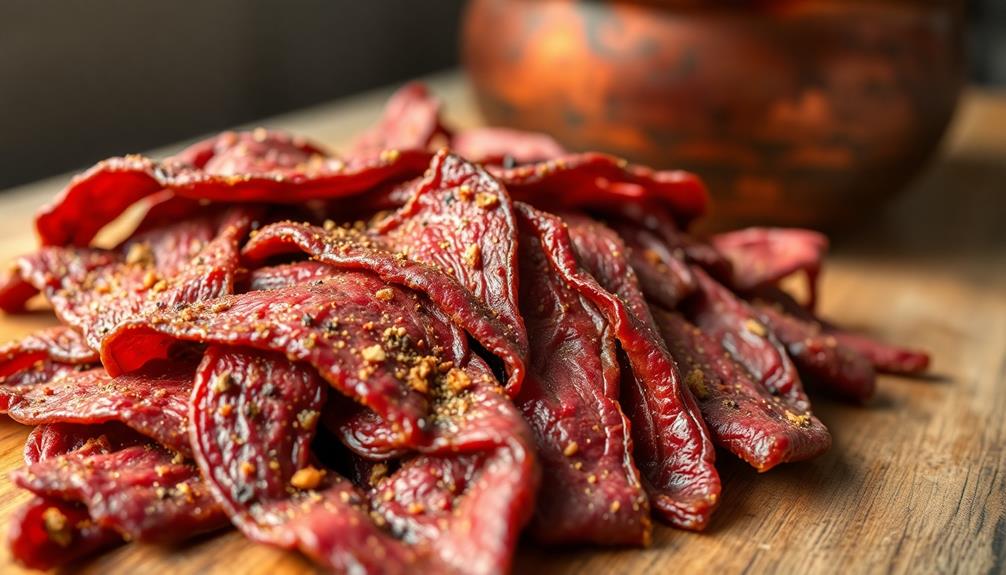
Kawarma is a delectable preserved meat dish with ancient roots in the Middle East. Over centuries, people in this region developed ingenious techniques to preserve meat during times of scarcity. They'd dry and salt the meat, seasoning it with a blend of aromatic spices and herbs. This not only helped the meat last longer, but also infused it with rich, mouthwatering flavors. Today, kawarma remains an integral part of the region's culinary heritage, showcasing the resilience and ingenuity of its people. Crafting this captivating dish involves a multi-step process, from trimming the meat to smoking it to storing it just right. Want to learn more about the art of making kawarma?
Key Takeaways
- Kawarma is a traditional preserved meat dish with origins in the Middle East, developed to ensure long-term meat storage during times of scarcity.
- The preparation involves drying, salting, and seasoning the meat with spices and herbs, which enhances the flavor and aids in preservation.
- Kawarma is an integral part of the Middle Eastern culinary heritage, with regional variations that showcase the resilience and ingenuity of the people.
- The cooking process includes marinating the meat, searing it in hot oil, and simmering it to achieve a tender, flavorful result.
- Kawarma is celebrated as a link to the past and a testament to the resourcefulness of Middle Eastern communities in the face of limited resources.
History
Kawarma, a traditional preserved meat dish, has a rich history rooted in the Middle Eastern region. For centuries, people in this area have used ingenious techniques to store meat for long periods, ensuring a reliable food source during times of scarcity.
The process of making kawarma involves meticulously drying and salting the meat, often using spices and herbs to enhance the flavor. This preservation method not only extends the meat's shelf life but also imbues it with a unique, intensely savory taste.
As communities in the Middle East faced environmental challenges and limited access to refrigeration, kawarma became an integral part of their culinary heritage. The dish evolved, with different regions developing their own variations, each reflecting local ingredients and cultural traditions.
Today, kawarma remains a beloved staple, enjoyed not only for its practical benefits but also as a cherished link to the past, celebrating the ingenuity and resilience of the people who perfected this remarkable food preservation technique.
Cooking Steps
Once the meat is prepared, you can begin the cooking process. First, you'll want to gather your ingredients – the marinated meat, some oil, and any spices or herbs you'd like to add.
Heat the oil in a large pan over medium-high heat. When the oil is hot, carefully add the meat. Be cautious, as the hot oil may splatter! Let the meat sear for a few minutes, giving it a nice golden-brown color on all sides.
Next, reduce the heat to low and cover the pan with a lid. This will help the meat cook through without burning the outside. Let it simmer for about an hour, stirring occasionally, until the meat is incredibly tender. The long, slow cooking is what gives kawarma its signature texture and flavor.
Once the meat is cooked through, you can remove the lid and let any excess liquid evaporate. This will help create a thick, rich sauce coating the meat.
And there you have it – perfectly cooked kawarma, ready to enjoy!
Step 1. Trim Meat Into Thin Strips

Begin by trimming the meat into thin, even strips, about 1/4 inch thick and 2-3 inches long.
You'll want to use a sharp knife for this task, carefully slicing the meat against the grain. Take your time and focus on creating uniform pieces, as this will help them cook evenly later on.
Once you've got all the meat sliced, it's time to give them a quick rinse under cold water. This helps remove any impurities or excess fat.
After rinsing, pat the strips dry with a clean kitchen towel or paper towels. Ensuring the meat is dry is crucial for the next steps in the preservation process.
With your perfectly portioned meat strips ready, you can now move on to the next phase of making delicious kawarma.
Step 2. Soak Meat in Brine Solution
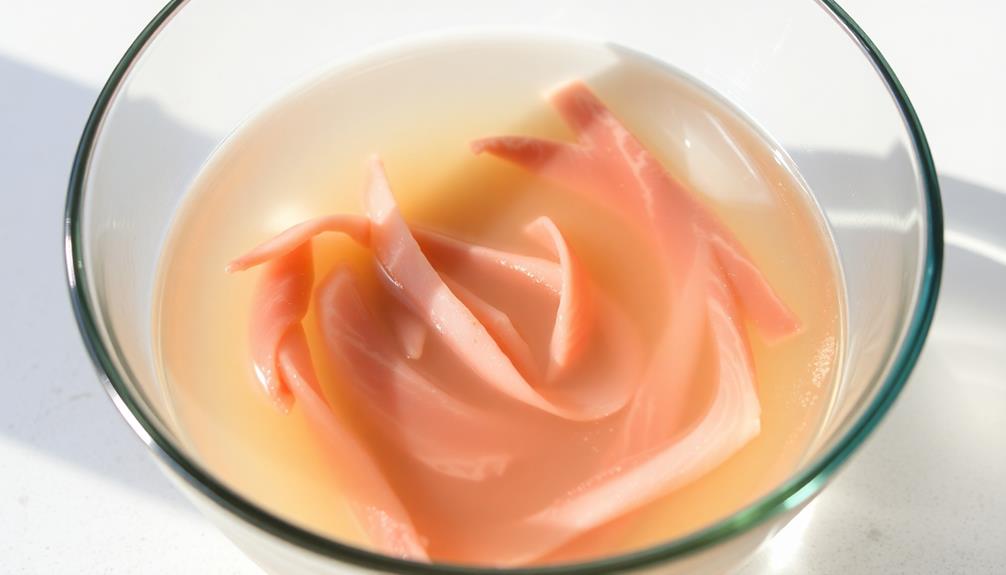
With the meat strips neatly prepared, you'll now create a brine solution to soak them in. In a large bowl, combine water, salt, and any desired spices. Stir the mixture until the salt fully dissolves, creating a flavorful brine.
Gently place the meat strips into the brine, ensuring they're fully submerged. Cover the bowl and let it rest in the refrigerator for several hours, or even overnight. This brining process infuses the meat with delicious seasoning and helps preserve it.
As the meat soaks, the brine will draw out excess moisture, concentrating the flavors. The salt in the solution also inhibits the growth of harmful bacteria, making the meat safer to consume.
Once the brining is complete, remove the meat strips from the brine and pat them dry with paper towels. They're now ready for the next step in the kawarma preservation process. Get excited, because your homemade kawarma is well on its way!
Step 3. Air Dry Meat Strips
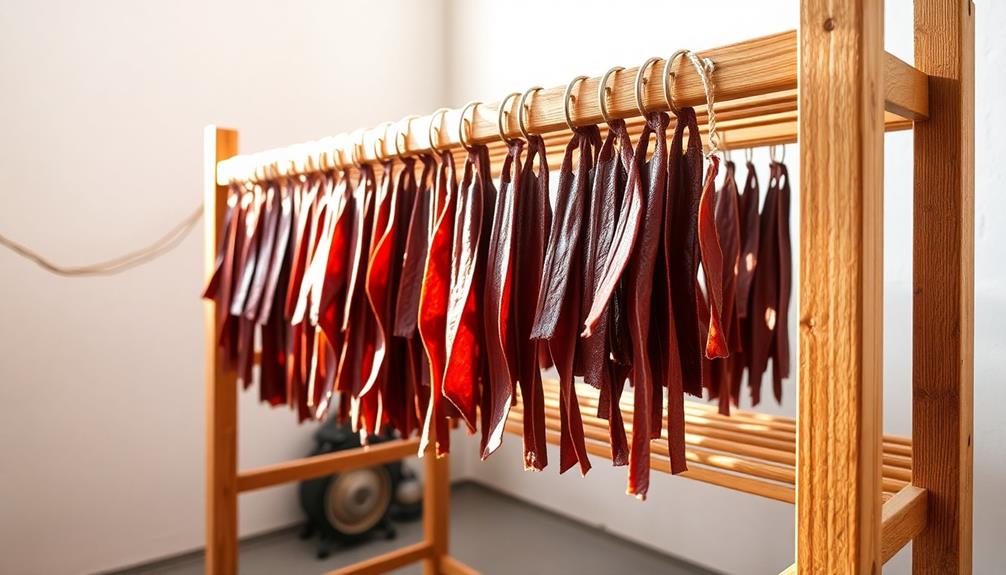
After the meat strips have finished brining, it's time to air-dry them. This stage is crucial for creating that classic kawarma texture – chewy, but not too tough.
Grab your meat strips and hang them up in a well-ventilated area, away from direct sunlight. You want a gentle breeze to circulate around them as they dry. It'll take a few hours, so be patient!
Keep an eye on them, making sure they're not getting too dry or crispy. Once they've developed a leathery, slightly shriveled appearance, you're ready for the next step.
Be careful when handling the strips – you don't want to break them. Gently transfer them to a clean surface, ready for the final touches.
Air-drying is a delicate process, but it's worth it to achieve that authentic kawarma flavor and texture. With a little TLC, your meat will be primed for the next phase of preservation.
Step 4. Smoke Meat Strips Over Wood
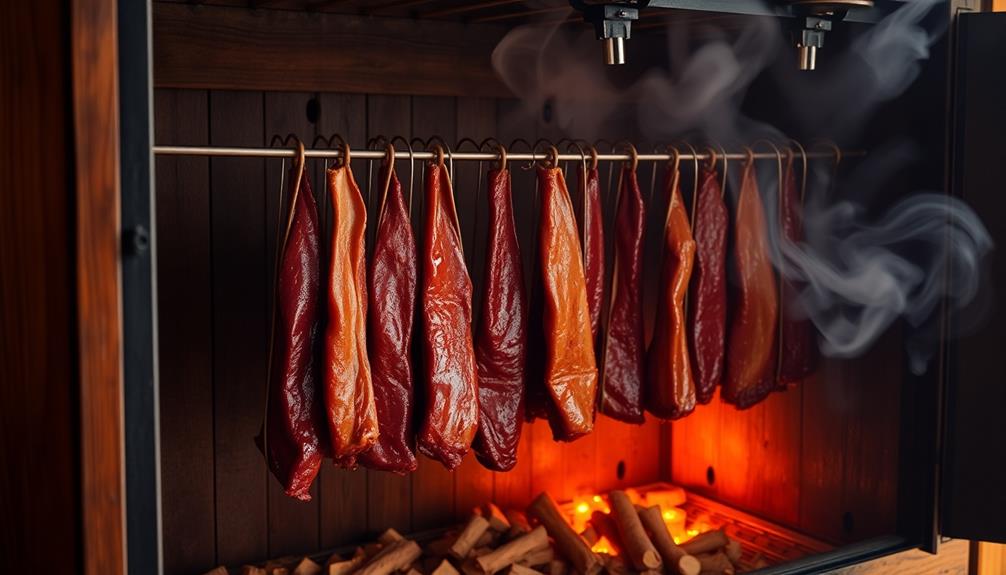
Once the air-dried meat strips have acquired the desired leathery texture, it's time to smoke them over wood. This step adds a delightful, smoky flavor that'll have your taste buds dancing.
First, gather some hardwood chips or chunks – oak, hickory, or mesquite work great. Soak the wood in water for at least 30 minutes to create a nice, steady smoke.
Next, set up your smoker or grill for indirect heat. Place the soaked wood over the heat source, then arrange the meat strips on the grates, making sure they don't touch. Close the lid and let the magic happen!
Smoke the meat for 2-4 hours, depending on the thickness of the strips, until they've acquired that irresistible, deep-smoked aroma. Keep an eye on the temperature, ensuring it stays between 200-225°F for best results.
Once the meat is perfectly smoked, remove it from the heat and let it cool slightly. Now, you're ready to enjoy the savory, smoky goodness of your homemade kawarma!
Step 5. Store in Airtight Container
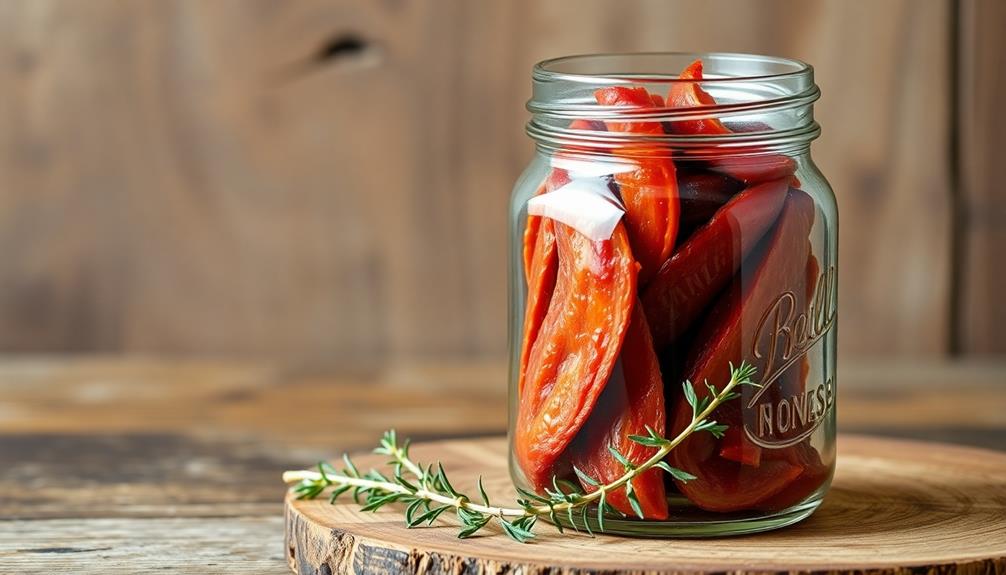
To store your homemade kawarma properly, you'll need an airtight container. This will keep your delicious preserved meat fresh and flavorful for weeks.
Simply place the smoked meat strips into the container, making sure there's no air pockets. Seal the lid tightly, locking in that smoky goodness.
Now, where should you store your kawarma? The best spot is in a cool, dry place, like a pantry or cupboard. Avoid the fridge or freezer, as the fluctuating temperatures can dry out the meat.
Your kawarma will stay perfectly preserved at room temperature in its airtight home.
When you're ready to enjoy a tasty piece, just open the container and grab a strip. The kawarma will be bursting with that irresistible blend of spices and smoke.
Store it this way, and your homemade kawarma will stay fresh for up to two months. Easy peasy! Now you can savor the fruits of your labor for weeks to come.
Final Thoughts
Kawarma, the preserved meat delicacy, has undoubtedly captured the hearts and palates of many. As you've learned, the process of creating this unique food is both fascinating and intricate. From the careful selection of meats to the precise curing and drying techniques, every step is crucial in producing the rich, savory flavors and melt-in-your-mouth texture that make kawarma so special. If you’re a fan of kawarma, you may also be interested in learning how to make homemade sujuk. This Middle Eastern sausage is another popular cured meat delicacy that requires skill and patience to create. From grinding the meat and mixing in the perfect blend of spices to the careful process of stuffing and drying, mastering how to make homemade sujuk is a rewarding endeavor for any food enthusiast.
Looking ahead, the future of kawarma is bright. As more people discover this traditional gem, the demand for its authentic, handcrafted version is sure to grow.
Whether you enjoy it as a snack, an ingredient in your favorite dishes, or a centerpiece of a festive spread, kawarma offers a delightful taste of history and culture.
So, the next time you savor a bite of this preserved meat, take a moment to appreciate the skill and dedication that went into its creation.
Kawarma is truly a culinary treasure worth savoring and sharing with loved ones.
Frequently Asked Questions
How Long Can Kawarma Be Stored For?
You'll be amazed at how long kawarma, a type of preserved meat, can be stored!
Properly stored, it can last an incredible 6 to 12 months.
That's right, you can enjoy the delicious flavor of this special meat for up to a year.
Isn't that wild?
With the right storage techniques, kawarma is a fantastic long-lasting option.
Get ready to savor its unique taste for months on end!
What Are the Health Benefits of Eating Kawarma?
Eating kawarma can be a real treat for your body! This preserved meat is packed with all sorts of amazing health benefits.
It's a great source of protein, which helps build and repair your muscles. Plus, it's got lots of vitamins and minerals that keep your bones strong and your immune system healthy.
Can Kawarma Be Used in Other Dishes?
Yes, you can absolutely use kawarma in other dishes! Kawarma's rich, savory flavor makes it a versatile ingredient.
You can chop it up and add it to soups, stews, or rice dishes. Or try frying it up and serving it over a salad for a tasty protein boost.
The possibilities are endless! Kawarma's unique taste and texture can really elevate all kinds of meals.
How Does the Taste of Kawarma Differ From Fresh Meat?
The taste of kawarma differs quite a bit from fresh meat. While fresh meat is juicy and tender, kawarma has a richer, more intense flavor.
It's been preserved and dried, so it has a chewier texture and a deeper, smokier taste. Don't worry – that doesn't mean it's tough or unpleasant.
It's just got a unique character that makes it perfect for adding big flavor to your favorite dishes.
Is Kawarma Only Made in Certain Regions?
Kawarma, a savory preserved meat, isn't just found in one region – it's enjoyed all around the world!
While the preparation may vary, the rich, concentrated flavor sets it apart from fresh meat.
Whether you're in the Middle East, Asia, or even parts of Europe, you'll likely find locals who've perfected their own unique kawarma recipe passed down through generations.
It's a truly global delicacy that brings communities together through its shared love of preserved meats.
Nadia brings the warmth and depth of Lebanese cuisine to Cook if Ya. From classic mezze spreads like hummus and tabbouleh to rich, flavorful mains like shawarma and kibbeh, her recipes offer a delicious journey through the flavors of Lebanon, emphasizing fresh herbs, spices, and aromatic ingredients.
Lebanese Cuisine
Harisseh (Semolina Cake)
With its captivating texture and comforting flavors, Harisseh, a semolina cake with ancient roots in the Middle East, is a cherished symbol of the region’s rich culinary heritage. Discover more about this delightful treat.
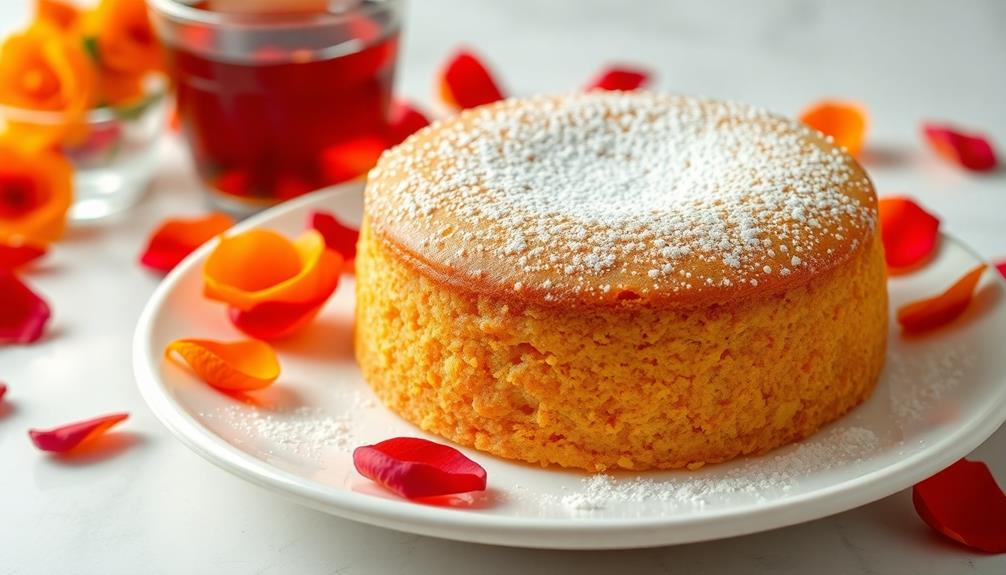
Harisseh, a semolina cake with ancient roots in the Middle East, will captivate your taste buds. Its unique texture and comforting flavors have delighted people for centuries. First, you'll sift the semolina and flour to create a smooth, fluffy crumb. Then, you'll slowly add melted butter, milk, and sugar, blending them into a batter. Once baked, the cake's mouthwatering aroma will fill the air. Finish with a sprinkle of crushed pistachios for a beautiful presentation and delightful contrast of flavors. With a few simple steps, you'll be enjoying this cherished symbol of the region's rich culinary heritage. And there's more to discover about this delightful treat. For a truly authentic experience, pair your harisseh with a traditional Middle Eastern tea or coffee to complement the sweet pastry dessert. Whether enjoyed on a peaceful afternoon or shared with loved ones, harisseh is sure to become a cherished part of your culinary repertoire. Its timeless appeal and simple yet satisfying ingredients make it a beloved treat worth savoring.
Key Takeaways
- Harisseh is a cherished semolina-based cake with origins tracing back to ancient culinary traditions of the Middle East, particularly Mesopotamia and the Levant region.
- The recipe involves sifting semolina and all-purpose flour, incorporating melted butter, milk, and sugar, and baking in a preheated oven for 30-35 minutes.
- Sifting the flours is crucial for achieving a light and fluffy crumb, while the addition of melted butter and milk contributes to the cake's rich and creamy texture.
- Garnishing the warm cake with crushed pistachios adds a delightful crunch and nutty flavor, enhancing the overall appeal and taste of the dish.
- Harisseh is a versatile cake suitable for special occasions or as a comforting snack, representing the rich culinary heritage of the Middle Eastern region.
History
The origins of harisseh, a semolina-based cake, can be traced back to the ancient culinary traditions of the Middle East. Over centuries, this delightful treat has evolved, with each region and culture adding their own unique flair.
Harisseh's roots lie in the kitchens of ancient Mesopotamia, where cooks first experimented with the versatile semolina flour. As the recipe spread throughout the region, it found a special home in the Levant, where it became a beloved part of the local cuisine.
Today, harisseh is enjoyed across the Middle East, from Egypt to Iran, each country and community putting their own spin on the classic recipe. Some add fragrant spices like cinnamon or cardamom, while others incorporate nuts or dried fruit.
No matter the variation, harisseh remains a cherished symbol of the region's rich culinary heritage, a timeless delight that connects generations and cultures.
Cooking Steps
To begin the cooking process, preheat your oven to 350°F (175°C). Grease and flour a 9-inch round cake pan or an 8-inch square baking dish.
Now, in a large bowl, whisk together the semolina, sugar, baking powder, and salt until well combined.
In a separate bowl, beat the eggs, milk, and melted butter until smooth. Slowly pour the wet ingredients into the dry ingredients, mixing until you have a thick, pourable batter.
Pour the batter into the prepared pan, smoothing the top with a spatula.
Bake the harisseh for 35-40 minutes, or until a toothpick inserted in the center comes out clean.
Allow the cake to cool in the pan for 10 minutes before inverting it onto a wire rack to cool completely.
Once cooled, serve the delicious semolina cake and enjoy its delightful texture and flavor.
Step 1. Sift Semolina and All-Purpose Flour

Sifting the semolina and all-purpose flour is a crucial step in preparing the Harisseh. By sifting, you'll remove any lumps or impurities, ensuring a smooth and consistent texture in your cake.
Start by placing a fine-mesh sieve over a large bowl. Gently pour the semolina into the sieve and shake it back and forth, allowing the fine grains to fall through into the bowl below. Repeat this process with the all-purpose flour.
Don't be tempted to skip this step – sifting aerates the flours, which helps create a light and fluffy crumb in the final cake. Plus, it's a satisfying process that only takes a minute.
Once you've sifted both the semolina and flour, give them a quick stir to combine. You're now ready to move on to the next step in crafting your delicious Harisseh.
Sifting may seem small, but it makes a big difference in the quality of your homemade semolina cake.
Step 2. Add Melted Butter

Next, add the melted butter to the sifted flours. You'll want to pour it in slowly, stirring as you go. This helps the butter incorporate evenly throughout the mixture. The butter will add a lovely richness and moisture to your harisseh cake.
Be sure to use real, unsalted butter for the best flavor. Melt it gently over low heat, watching closely so it doesn't burn. Once it's liquid, let it cool slightly before adding it to the dry ingredients.
Stir the butter in with a wooden spoon or sturdy spatula, making sure to scrape the sides and bottom of the bowl. Keep mixing until you have a smooth, well-blended batter. The butter should be fully incorporated, with no visible pockets or streaks remaining.
Now that the butter is in, you're ready for the next step! Grab your mixing bowl and let's keep going.
Step 3. Add Milk and Sugar

The addition of milk and sugar is a crucial step in crafting the perfect harisseh cake. This sweet combination brings a lovely creaminess and richness to the semolina base.
First, you'll want to pour in some whole milk, gently stirring it into the melted butter until the mixture is smooth and well-combined. The milk adds a delightful moistness that balances the slightly grainy texture of the semolina.
Next, it's time to sprinkle in the granulated sugar. Start with a quarter cup and give it a good stir, tasting as you go to achieve your desired sweetness level. The sugar will dissolve beautifully, lending a comforting, homey flavor to the cake.
Feel free to add a bit more if you'd like an extra-sweet treat.
With the milk and sugar incorporated, the batter is ready for the next step. Keep stirring to ensure everything is evenly distributed, then prepare to bake your aromatic and delectable harisseh cake.
Step 4. Bake in Preheated Oven
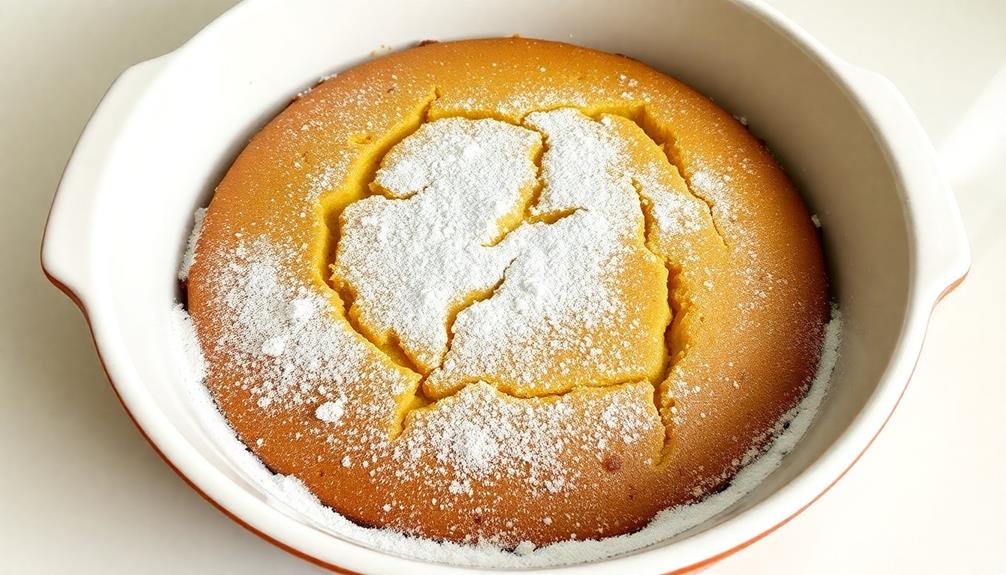
Preheating the oven to the specified temperature is essential for baking the harisseh cake to perfection. Set your oven to 350°F (175°C) and let it heat up completely. This even heat distribution is crucial for the cake to rise evenly and develop a beautiful golden-brown crust.
Once the oven is ready, carefully pour the batter into a greased baking pan. Spread it out evenly, making sure to reach the edges. This will help the cake bake consistently throughout.
Pop the pan into the preheated oven and let the magic happen!
Bake the harisseh for 30-35 minutes, or until a toothpick inserted into the center comes out clean. The aroma wafting through your kitchen will be absolutely mouthwatering.
Keep an eye on the cake, and if the top starts to brown too quickly, simply cover it with a sheet of aluminum foil to prevent overbrowning.
Step 5. Garnish With Crushed Pistachios
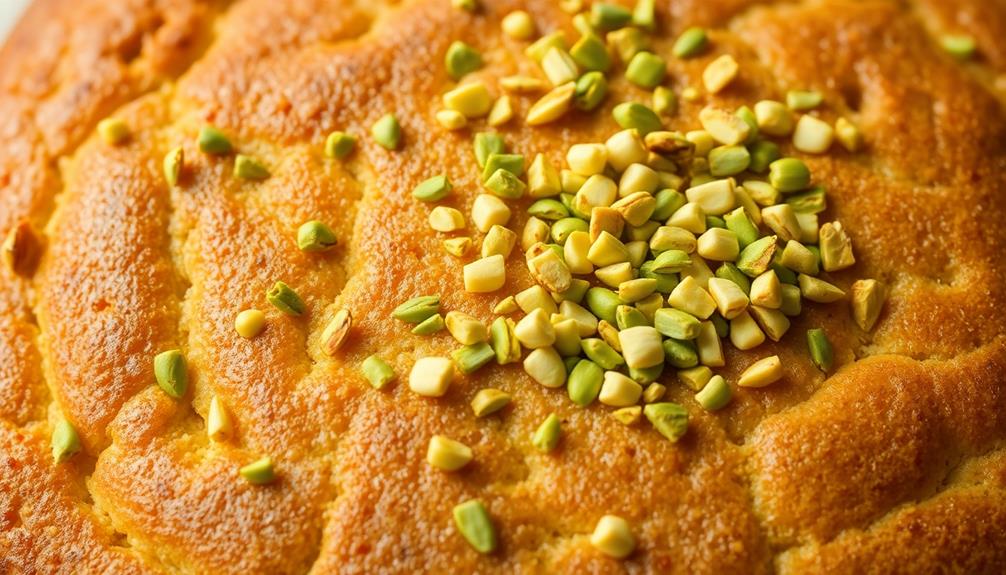
Once the harisseh has finished baking to perfection, it's time to add the finishing touch – a sprinkle of crushed pistachios. This simple garnish elevates the cake, bringing a delightful crunch and a pop of vibrant green color.
Gather a handful of shelled pistachios and place them in a small plastic bag. Use a rolling pin or the back of a spoon to gently crush the nuts into small, irregularly shaped pieces. You don't want them too finely ground – just enough to create a lovely texture.
Carefully remove the baked harisseh from the oven and let it cool slightly. While it's still warm, generously sprinkle the crushed pistachios over the top of the cake. The warm semolina will help the nuts stick, creating a beautiful, nutty topping.
Serve the harisseh immediately, allowing your guests to admire the tempting display of golden cake and vibrant green pistachios. The contrasting flavors and textures will delight the senses and have everyone reaching for seconds.
Final Thoughts
Ultimately, you should feel confident in your ability to create this delectable semolina cake, Harisseh. The process may seem daunting at first, but with a little practice, you'll be whipping up these fragrant and indulgent treats in no time.
Remember, the key is to take your time and follow the instructions carefully. Don't be afraid to experiment with different garnishes or flavors to make the dish your own.
Whether you're serving it at a special occasion or enjoying it as a comforting snack, Harisseh is sure to delight your taste buds and impress your friends and family.
Frequently Asked Questions
Can I Substitute Regular Flour for Semolina in This Recipe?
You can certainly try substituting regular flour for semolina in this recipe, but it won't give you quite the same texture.
Semolina has a coarser, grittier texture that adds a unique crumb to baked goods. If you use regular flour, your cake might turn out a bit more fine and delicate.
But hey, why not give it a shot? You might discover a whole new flavor and texture that you love!
How Long Can the Harisseh Cake Be Stored?
You'll be excited to hear that the delicious harisseh cake can be stored for up to a week!
Just keep it in an airtight container at room temperature, and it'll stay fresh and moist. Isn't that great news?
You can enjoy the soft, sweetness of this traditional semolina cake for days.
Just be sure to savor every bite – it's too good to let it go to waste!
Is Harisseh a Traditional Dessert From a Specific Region?
Ooh, you're in for a real treat! Harisseh is a delightful traditional dessert that originated in the Middle East.
It's a semolina-based cake with a mouthwatering, dense texture and a unique flavor profile. Depending on the region, it can be flavored with rose water, orange blossom water, or even spices like cinnamon.
No matter where it's from, this sweet treat is sure to delight your taste buds and transport you to a world of rich, cultural history.
Can I Use a Different Type of Sweetener Instead of Sugar?
Sure, you can absolutely use a different sweetener instead of sugar in your recipe!
Honey, maple syrup, or even agave nectar would work great. The key is to adjust the amount you use, as these alternative sweeteners can be more intense than regular sugar.
Have fun experimenting and find the flavor that suits your taste buds best.
Just be sure to keep a close eye on the texture and consistency as you make the switch.
Happy baking!
What Is the Purpose of the Rose Water in This Recipe?
Rose water adds a lovely, delicate floral flavor to many Middle Eastern desserts. When you use it in your baking, it transports you to a fragrant, exotic world.
The gentle rose scent in your dish creates a sense of warmth and comfort, elevating the overall experience. Plus, the rose water pairs beautifully with the rich, nutty flavors of the semolina in this recipe.
Just a touch goes a long way, so you'll enjoy the subtle yet captivating essence it brings to your dessert.
Nadia brings the warmth and depth of Lebanese cuisine to Cook if Ya. From classic mezze spreads like hummus and tabbouleh to rich, flavorful mains like shawarma and kibbeh, her recipes offer a delicious journey through the flavors of Lebanon, emphasizing fresh herbs, spices, and aromatic ingredients.
-

 Southern Comfort Food1 month ago
Southern Comfort Food1 month agoCheese Straws
-
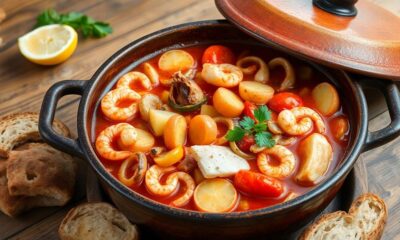
 Brazilian Cuisine1 month ago
Brazilian Cuisine1 month agoCaldeirada
-

 Brazilian Cuisine1 month ago
Brazilian Cuisine1 month agoChicken in Brown Sauce
-
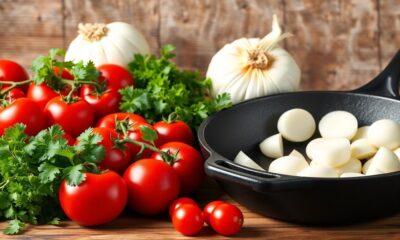
 Brazilian Cuisine1 month ago
Brazilian Cuisine1 month agoTacacá
-

 Southern Comfort Food1 month ago
Southern Comfort Food1 month agoCreamed Corn
-

 Southern Comfort Food1 month ago
Southern Comfort Food1 month agoSquash Casserole
-

 Southern Comfort Food1 month ago
Southern Comfort Food1 month agoChocolate Gravy
-

 American Diner Classics1 month ago
American Diner Classics1 month agoChef’s Salad




















